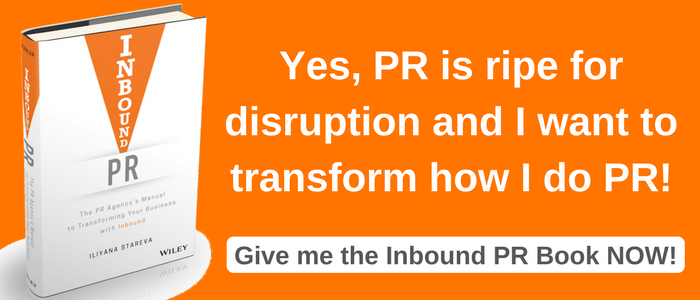
Last week, we covered the first part of Brian Halligan's and Dharmesh Shah's keynote at our HubSpot INBOUND conference from two weeks ago.
After learning from Brian about how to get from startup to scaleup, today we'll look at what Dharmesh, HubSpot's CTO and co-founder, shared on how to grow better consistently by looking at the three key functions - marketing, sales and customer service - and how they should be creating a delightful customer experience at each key stage they take care of - attract, engage and delight.
Dharmesh started with a personal story of how he got to spend a whole dinner with Elon Musk.
As the evening was progressing, Dharmesh asked Elon an important question, namely "How do you work towards solving really big problems?"
Here's how Elon explained it:
"Let's say you're trying to get your company from point A to point B. Every person on the team is a vector. Your progress is determined by the sum of all vectors."
Now Dharmesh was a bit puzzled and of course, got to do some thinking around this.
Let's look at this a bit.
A vector is defined as a quantity having both magnitude and direction. A person who's super productive, effective and intelligent for example is a scaler - just a magnitude - but nothing else because we don't know what direction they'll take. If we know this person is moving in the right direction, then that's a vector that brings about impact.
But what if you have four people, two of which are moving in one direction, the other two in another, then the algebra doesn't work - your impact is 0.
The most typical scenario in companies, though, is people moving in the correct-ish direction like this:

The problem here is that we're not optimising the value.
What we should be aiming for (as according to Elon' saying) is this:

The magnitude of the impact here is the maximum of 36.
So why did Dharmesh go through all of this? Because:
The number one issue most companies have is misalignment. And that's not just when people are not aligned with the company's goals but the bigger problem is when the company's goals are not aligned with what the customer wants or needs.
Customers want a delightful experience from end-to-end and this what the company's goal should be because that's the only way to grow and scale.
How To Think About The Customer Experience
Typically, we've thought about the customer experience in a funnel or linear way solving for attract, engage and delight from top to bottom or left to right.
But there's a better way to do this. The right way to think about the journey is a cycle because once you delight people they bring on more people to you and you can keep going and going which becomes the Virtuous Cycle of Growth embedded in your customer journey actions and your team responsibilities, enabled by the right platform(s):

Making the Customer Experience Better with Your Marketing Team:
If you've read the Inbound Marketing book, the key message there was that you should add value before you extract it by creating content. However, what happened with time and also with us at HubSpot, people focused too much on creating content rather than adding value.
After some research and testing at HubSpot, we uncovered data that told us how we should stick with the 80/20 rule when it comes to content. The 80/20 rule is Pareto's principle which says that 80% of the effects come from 20% of the causes or that a small percentage of the inputs, lead to a disproportionate percentage of the outputs/results.
We decided to dig into this and after analysing HubSpot's blog posts, we found something even more impressive:

Once we discovered this, we cut down the blog posting frequency and really focused on quality. The number of views and leads per post went up - so better content really does better. Focus needs to be on the quality of the content not the quantity of it so that you become a content brand with a reputation for publishing remarkable content.
In terms of budget for marketing, we should be aligning it and its desired activities with the changing landscape of human and buying behaviours rather than just increasing the budget for next year by 10% as most companies tend to do:

Making the Customer Experience Better with Your Sales Team:
Dharmesh shared an interesting learning: Some people are not good at selling but they get really good sales - sounds like a paradox but the reason is that we typically confuse the activity of selling with the outcome of sales. Selling is just one of the possible activities one can do to result in sales. And the best one instead of hustling is helping. Some of our best sales people come from our Support organisation. There's a big, additional pool of talent that we should be tapping into in addition to tradition sales hires.
To look at the customer experience, we did a survey asking our sales rep if they thought they added value to the buyer in their conversations - 82% said yes. We then asked the buyers whether they received value during those conversations - 34% said yes.

This disconnect is not just a problem but an opportunity too to improve conversations and add value in them just as with the marketing content piece we discussed.
A good sales platform here would allow you to make your sales reps more efficient but also to provide them with the right information for each prospect and each prospect's activities on your website or their interactions with you. The more personalised the approach, the more value your sales people will be able to add.
Making the Customer Experience Better with Your Customer Services Team:
Not only are customers the purpose for our existence as a company, they are the biggest driver of growth. This is easily understandable if we look at what influences their purchasing decisions:

So how do we create delighted customers?
The formula is simple when you look at it but not that easy to implement:

The idea here is that if a customer tweeted you and you ring them on the phone as your follow-up, you are probably engaging with them the wrong way.
I personally like Facebook messenger and expect a response there (almost right away) - in fact, 1 billion messages are being sent to brands on Facebook messenger on a monthly basis. It's no longer about build it and they will come; it's about they're already here and they want to chat.
The companies that get this right and personalise the experience at every touch point are the ones that will succeed.
In fact, our own data shows that chat has become far more effective than forms:

We should be giving people the opportunity to self-select the best way they want to engage with us - if they want to chat, great, give them the opportunity to do that; if they want to read and use a form, great, give them that and so on.
40 years ago you had to have a phone as a company; 20 years ago you had to have a website for your own online presence; today, you have to have a messenger presence. The problem becomes, though, that you may not be open 24 hours a day and can't have/afford that type of resources, so how do you deal with the constant messages? Well, with chat bots! The good news is, you don't have to build your own bots from scratch, you can get a bot platform like Motion.ai that lets you drag and drop and easily have your bot (at an affordable rate).
The other big piece is to make sure you have an efficient organisation that helps the customer quickly and doesn't burden the customer with e.g. questions like "tell me what your account number is" when you should be the one knowing the answer already or digging it out. Again, a good platform will help you do that.
When it comes to solving for each stage of the customer journey - attract, engage and delight - and enable your marketing, sales and customer teams to do remarkable work, you should rely on technology and start with a strong backbone platform and plug in the gaps. There's plenty of software tools out there today to find your perfect fits.
At HubSpot, we now have unique Hubs to solve for this experience.
How To Grow Better? It Boils down to 3 Things:
So how do you grow better? Well, this is what we've learned at HubSpot:
- First, believe in people and understand that everybody wants love and respect.
- Second, say what you believe not what you think will drive the numbers in a certain direction.
- Third, do the things you say and walk the talk.
Enjoy the video (I covered after minute 46)!
How do you grow better?







